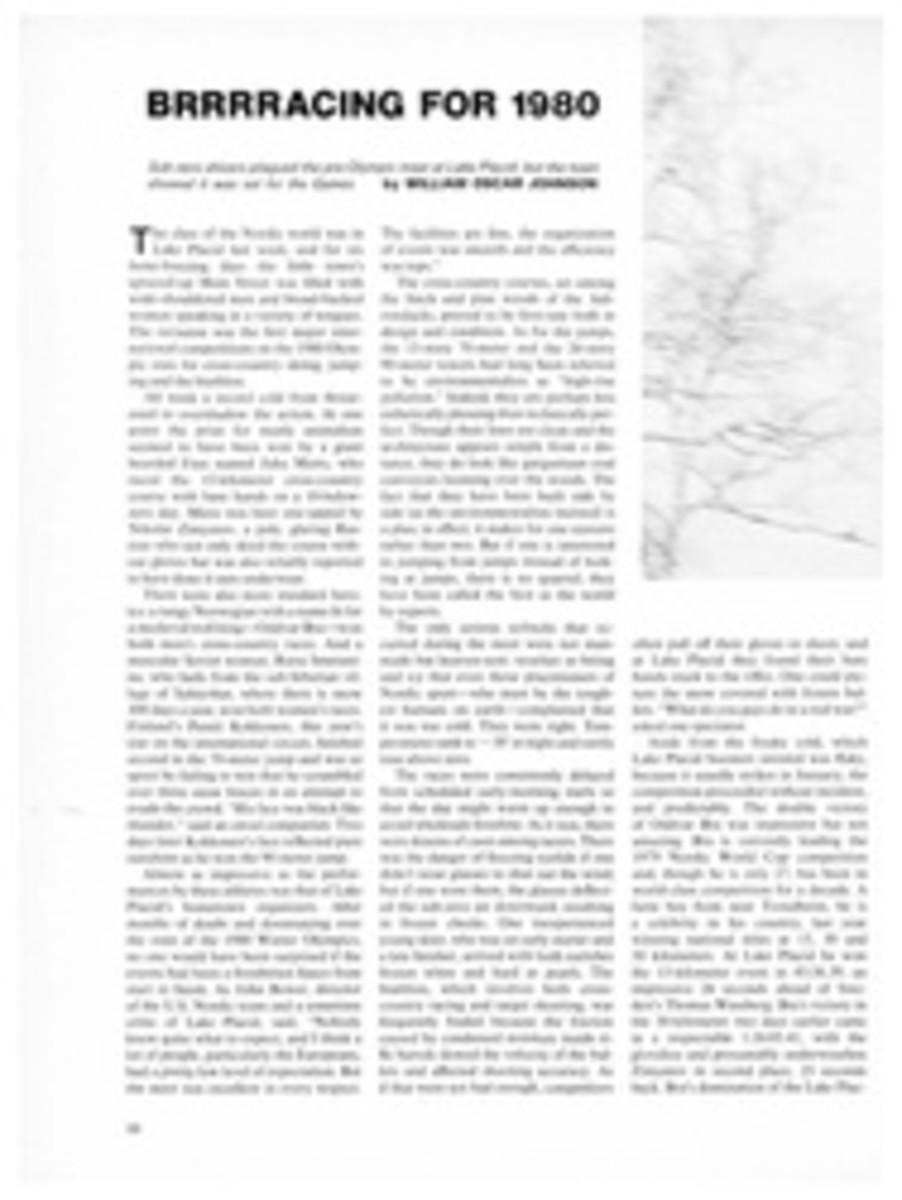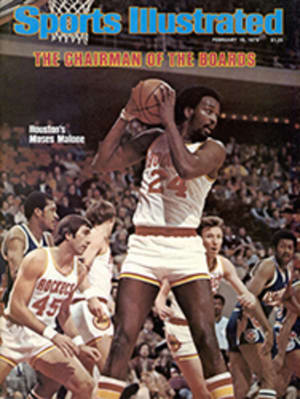
The deal is no deals
It was late on Thursday afternoon, only 32 hours before baseball's winter inter-league trading deadline, and White Sox General Manager Roland Hemond was chasing frantically around the Sheraton Twin Towers in Orlando, Fla., making a list of which of his colleagues would be staying at the site of the baseball meetings through midnight Friday. All week, team owners, general managers and agents had huddled in the lobby, met in suites and talked on the phone trying to work out trades. On Wednesday the White Sox even began using three walkie-talkies to keep track of people's whereabouts. Still, no blockbuster deals were announced. By Friday the challenge was to find a believable trade rumor.
None of this deterred Hemond. After all, a winter meeting isn't complete unless the White Sox pull off a string of deals, often in the waning moments. "I remember meetings by who we traded," says Hemond. "Phoenix: Dick Allen; Honolulu: Ken Henderson; Hollywood. Florida: Ralph Garr." But midnight Friday came and Hemond still had made no deals. He wasn't alone. Half of the clubs left Orlando without making a trade. In all, there were just 12 swaps involving 31 players. In the previous six years, the teams averaged 20 trades, with 54 athletes changing uniforms. And since most of the players traded this time were not headline grabbers—Dan Ford, Pete Falcone, Tom Grieve and Buddy Bell, to name a few—these meetings will be remembered as Orlando: zilch.
Some baseball executives insisted that many of the trades that didn't materialize in Florida would occur during the month-long spring interleague trading period that begins Feb. 15. However, it now appears that the inactivity of the winter meetings will be duplicated in the spring. "It's worse, if anything, having this second period," says Boston's Haywood Sullivan of the extra trading session that was added two years ago. "It allows clubs to put off deals in December. Then they get to this second period and say, 'We want to see what happens in spring training with some of our kids." Of course, each pitcher has only been out on the mound once when the trading period ends."
Nonetheless, in the coming weeks Houston will be trying to peddle Bob Watson, a career .300 batter whose contract is up at the end of next season. There appear to be no more takers for him now than there were in December. The Phillies may attempt to move Richie Hebner, but a three-way deal that would send Hebner to New York, Mets Catcher John Stearns to San Francisco and Giant In-fielder Bill Madlock to Philadelphia seems to have fallen through. And most of the other names that are being tossed around—Eduardo Rodriguez of the Brewers, Jay Johnstone and Jim Spencer of the Yankees and Cincinnati's Ken Griffey—are players whom clubs want to deal off because of salary problems or discontent. Considerable uncertainty remains about where—or if—any of them will go.
This second chance to make interleague trades has resulted in a modest amount of action—31 players swapped in nine deals—since it was established as part of the 1976 Basic Agreement between the players and owners. And the activity this time around is likely to proceed at an even slower pace, because the same contractual roadblocks that the clubs faced in Orlando are still very much in force. Management likes to bundle these obstacles together in a handy phrase—"the players are trading themselves." In other words, because of free agentry and other new rules, players now generally have the power to decide when, where and if they will change teams. And interleague trades, which traditionally are baseball's biggest deals, are not the only ones affected. Intraleague swaps of notable players are also fast becoming a rarity.
Under the old system, the Hebner-Stearns-Madlock trade would have been a natural. The Mets, who feel they have minor-leaguers who can move up to handle their catching, need a third baseman. Hebner would fill the bill. The Giants want to strengthen themselves behind the plate, and Stearns is a good young catcher. Philadelphia's only weak spot is second base, a position Madlock can play but Hebner can't. Presto, a three-way deal. But no. The trade is unlikely to happen, at least partly because under the current rules five-year men Hebner and Madlock could demand to be traded if their new teams fail to renegotiate their contracts by the end of the upcoming season. This kind of situation quite naturally doesn't sit well with management.
"In the old days," says Lou Gorman of the Mariners' front office, "there was no 10- and five-year rule, no stipulation whereby a player could demand to be traded after five years or just plain walk away by becoming a free agent after six. Ability was the sole criterion by which a club measured a possible trade. That, and the player's chances of filling a team's need. Now, ability is just a tiny part of a complex picture."
The picture started becoming complex in '75 when the Messersmith decision, which eliminated the reserve clause binding a player to his team in perpetuity, forced baseball to reluctantly accept stipulations in the Basic Agreement that allow players unprecedented freedom. After signing the agreement, teams started giving many of their best players multiyear contracts, some with no-trade clauses, others with complicated deferred payments stretching into the 21st century. These self-imposed restrictions, coupled with those already in the Basic Agreement, are primarily responsible for the current lack of wheeling and dealing.
On top of that, 32 of this year's 42 free agents were unsigned during the winter meetings, causing many teams to hold off trading in hopes of grabbing a free agent. "We wanted to get maximum value for Enrique Romo," says Gorman of his aging relief pitcher. "But because Elias Sosa and Mike Marshall were available as free agents, some clubs weren't as interested in Romo as they might have been." Gorman ended up sending Romo, who had an 11-7 record and 10 saves for a last-place team, to Pittsburgh for the paltry return of three minor-leaguers.
However, the availability of free agents is hardly the only factor inhibiting trades.
•Philadelphia wanted Cub Second Baseman Manny Trillo. At one point, Chicago agreed to trade Trillo as part of a five-or six-player deal. The Phillies then withdrew Outfielder Jerry Martin from the package, replacing him with Bake McBride. The deal was rejected by the Cubs because McBride's option year is 1979 and the Cubs didn't think they could sign him. McBride would therefore become a free agent next fall, and the Cubs would be short both a second baseman and an outfielder.
•Baltimore went to Orlando looking for an outfielder. As trade bait the Orioles offered 16-game-winner Dennis Martinez. Cincinnati countered with Griffey. As desirable as Griffey, a .309 lifetime hitter, might seem to be, Baltimore refused. "He's got only one year left on his contract," says the Orioles' Hank Peters. "And after 1979 he'll be a six-year man."
•St. Louis General Manager John Claiborne bypassed a four-player deal that would have helped the Cardinals' struggling offense. "One of my players who would have been involved in the trade is a three-year man," he said, "the other is in his second big league season. Both of the other team's players are in the last year of their contracts and both are six-year players. We would have had the players for one season, whereas they would have gotten three and four seasons out of our players."
•Minnesota owner Calvin Griffith, forced to trade Rod Carew to avoid losing him as a free agent after next season, was frustrated when Carew vetoed a trade with the Giants that would have benefited the Twins. Griffith subsequently sent the seven-time batting champion to California for an outfielder who hit .223 last season, a pitcher who was 6-10 and two minor-leaguers. "It would be better to turn the clubs over to the players, give the owners salaries and let the players cut up what's left among themselves after the season," says Griffith.
Most owners can sympathize with Griffith's frustrations. As bitterly as they may feel about their loss of power, however, they do not all blame Players Association Director Marvin Miller or the players for the turnabout. Many owners point the accusing finger at themselves.
"Miller did a heck of a job for the players," says Cleveland President Gabe Paul. "We simply were overmatched." San Francisco General Manager Spec Richardson adds, "The owners and GMs created this problem themselves. We'd be breaking the law if we agreed among ourselves to set maximum contract figures, but even if we could agree, somebody would fudge."
Lacking both self-restraint and the freedom to trade as they please, owners are now casting hopeful eyes on a new Basic Agreement, which must be negotiated before the start of the 1980 season. Management's main concern is the compensation received by teams that lose free agents. A club now gets a choice in the amateur draft from the team that signs its player. Says Baltimore's Peters, "Whether I lose a Reggie Jackson or a Royle Stillman, I get the same compensation. Now tell me, is that right?"
Miller says, "If baseball attempts to unravel the whole agreement because of one thing like compensation, it won't work. We will negotiate because the 1976 agreement requires us to, but it's been proven in football that equal compensation means lack of movement."
That does not bode well for the owners, because when Miller has sat down to negotiate in recent years, he has almost invariably come away the winner. He is unlikely to give more than an inch—if that much—on compensation. That means free agents will still be marketable and, as a result, trades will remain hard to make. In light of this, it was fitting that Pete Rose chose to announce his signing with the Phillies at the Orlando meetings. The days of hot-stove deals may be over, but cold-cash signings are here to stay.
PHOTO
A Stearns-Hebner-Madlock swap is now..
PHOTO
..unlikely because the rules could allow
PHOTO
..two of them to demand to be traded again in 1980.

